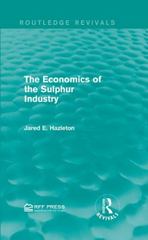Answered step by step
Verified Expert Solution
Question
1 Approved Answer
Year Q1 Q2 Q3 Q4 2014 . . 1,513 1,060 2015 1,431 1,123 994 679 2016 1,485 886 1,256 975 2017 1,256 1,156 1,163 1,062
| Year | Q1 | Q2 | Q3 | Q4 |
|---|---|---|---|---|
| 2014 | . | . | 1,513 | 1,060 |
| 2015 | 1,431 | 1,123 | 994 | 679 |
| 2016 | 1,485 | 886 | 1,256 | 975 |
| 2017 | 1,256 | 1,156 | 1,163 | 1,062 |
| 2018 | 1,200 | 1,072 | 1,563 | 531 |
| 2019 | 1,022 | 1,169 | . | . |
- Enter the data in MS Excel, as demonstrated in the example video (data should be in columns, with a header row to clearly identify the data in each column).
- Create dummy variables for Q1, Q2, and Q3 (you do not need a Q4 variable, as discussed and demonstrated in the example video).
- Create the trend variable (a variable that increases by 1 for each quarter of time that passes
To calculate the forecasted value for the third quarter of 2019, which answer shows the correct values for Q1, Q2, and Q3?
a.Q1=0, Q2=0, and Q3=1
b.Q1=0, Q2=0, and Q3=0
c.Q1=0, Q2=1, and Q3=0
d.Q1=1, Q2=1, and Q3=0
Step by Step Solution
There are 3 Steps involved in it
Step: 1

Get Instant Access to Expert-Tailored Solutions
See step-by-step solutions with expert insights and AI powered tools for academic success
Step: 2

Step: 3

Ace Your Homework with AI
Get the answers you need in no time with our AI-driven, step-by-step assistance
Get Started


